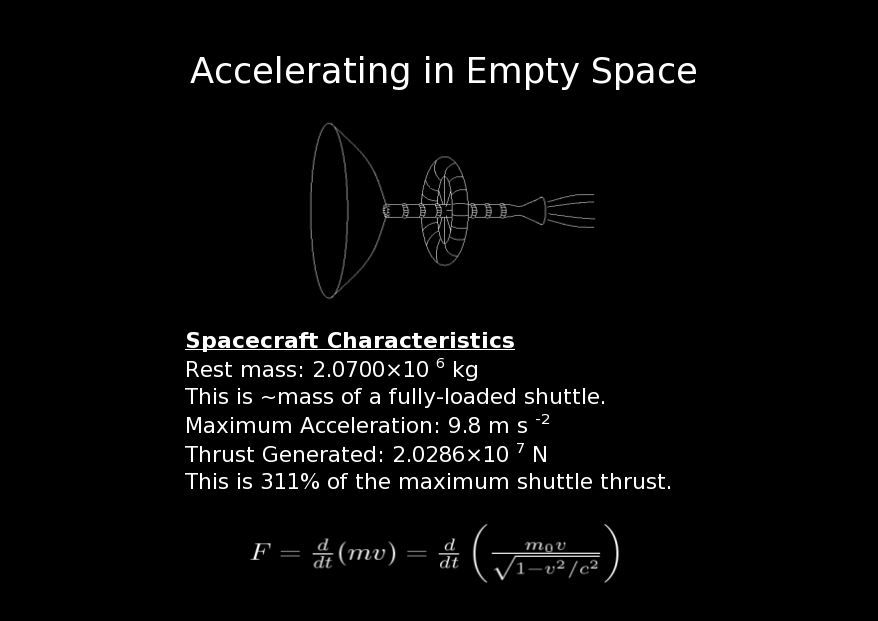










Imagine that we have a spaceship that can produce a constant thrust without losing rest mass. Maybe it has an electromagnetic scoop feeding a fusion-powered RAM jet. In reality, any engine would require the expenditure of fuel, which would be part of the ship's rest mass. Otherwise, it would violate the laws of thermodynamics. But let's suppose that our ship has such a completely efficient engine. We'll also suppose that we're going to travel at a constant thrust F in one direction, which we'll call the z-direction, in flat, empty space and that our trip will start from rest time t = 0 and at z = 0. So we can relate to the scale of our ship, we'll assume that it has about the same mass as a fully-loaded Space Shuttle. Also, we want to be comfortable. So we'll assume that the maximum acceleration of our ship is 1g or 9.8 m s-2.
By the way, making the ship more realistic by assuming that propulsion requires a linear expenditure of fuel over time doesn't change what happens qualitatively. It just makes the mathematics slightly more complicated and changes the numerical values slightly.
The relativistic equivalent of Newton's second law states that the force F equals the rate of change of momentum, where the mass changes with the velocity.
I am the author of the images and text except where otherwise indicated. Please contact me for permission if you wish to use any of my images or text.
Created on Wednesday 03 May 2006 by Mark A. Martin with KPresenter